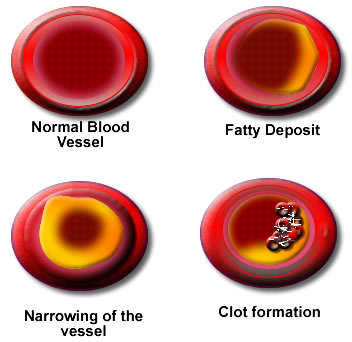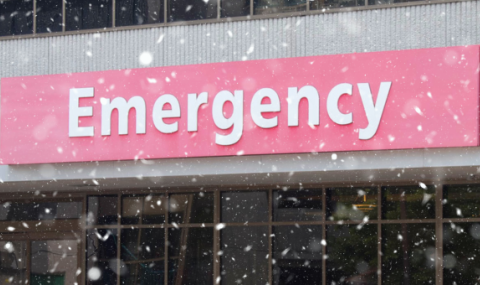|
STROKE A stroke is caused by a loss of blood flow to an area of the brain. When the blood flow is disrupted for a long enough period of time, an area of brain tissue will die. This damage is permanent, and will cause a loss of function that corresponds to the area of injury. The degree of disability can range negligible to catastrophic. Stroke can be fatal. Another name for a stroke is a Cerebral Vascular Accident or CVA. A stroke can occur for a number of reasons. A low blood pressure or cardiac arrest can decrease the blood flow to the brain and produce a stroke. An aneurysm in a brain blood vessel (cerebral vessel) can rupture and cause a stroke. Athersclerotic disease can produce narrowing of the blood vessels or cause clots to form. A clot can obstruct the flow of blood to one of the cerebral vessels. Patients will sometimes experience a "warning stroke" called a Transient Ischemic Attack or TIA. A warning stroke is a brief episode with stroke symptoms that resolves and goes away. Symptoms may include visual changes, speech problems, sudden weakness of loss of movement or sensation or dizziness. Warning strokes are frequently caused by small blood clots. If the clot moves or is small enough, blood flow will resume to the area before permanent damage occurs. Warning strokes must always be investigated in order to treat the cause before a permanent stroke occurs. Patients can also suffer a stroke after a traumatic brain injury as a result of direct trauma or blood flow disruption. Bleeding into the brain can deprive the brain of oxygen. Certain types of irregular heart rhythms can cause clots to form in the heart. These clots can travel to the cerebral vessels and produce a stroke. Clots can also form in the carotid arteries in the neck as a result of atherlosclerosis. Clot can break away from the carotid vessel and travel to the brain. The treatment of stroke varies widely and depends upon the underlying cause. If a patient has a blood clot that has caused a stroke (called a thrombotic stroke), and the symptoms began less than 4.5 hours earlier, a clot busting drug called t-PA can be given. If this happens while a patient is admitted to Victoria Hospital, a Code Stroke emergency response may be called. If the patient is well enough to receive the clot busting drug (it can cause bleeding), the patient may e given the drug and transferred to the acute stroke unit at University Hospital. If the patient is unstable, they will remain in CCTC and receive treatment.
|
Image 1 : Narrowing of a blood vessel due to atherosclerosis. |
|
|
|
|
|
|
|
|
|
|
|
Last Updated: October 23, 2014




